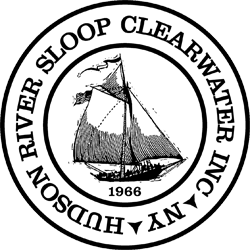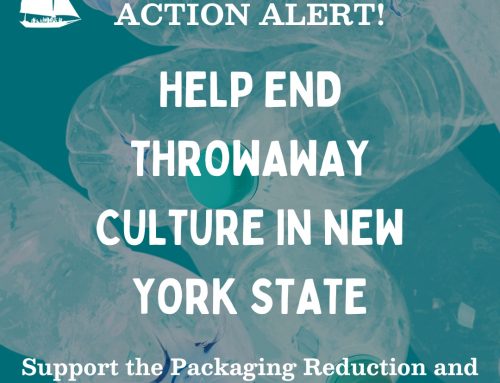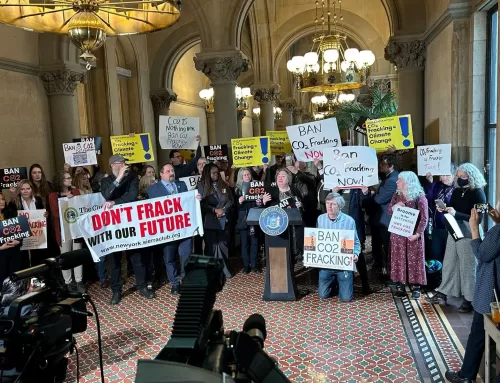Comments to EPA bolstered by work of independent scientist, challenge GE’s calls for delays and reduced cleanup effort
CAPITAL REGION/HUDSON VALLEY – May 25, 2010 – Following the results of the first phase of toxic cleanup in the Hudson River, leading environmental groups and an independent scientist told the Environmental Protection Agency they believe it can continue to successfully meet its major objectives through reasonable adjustments and should see the project through to completion.
As General Electric, the company responsible for the polychlorinated biphenyls (or PCBs) polluting the river, tries to limit the cleanup through cost-cutting and artificial scheduling constraints, the groups – Hudson River Sloop Clearwater, Natural Resources Defense Council, Riverkeeper and Scenic Hudson – concluded that there is no basis to curtail the Phase 2 cleanup, and that the project should proceed on schedule with the second phase starting in May 2011.
Ned Sullivan, President of Scenic Hudson said, “It is essential that we end the public war of words and competing theories of how to complete this cleanup and forge a consensus that will ensure compliance with the USEPA’s 2002 Record of Decision. We cannot squander the historic opportunity to achieve a lasting cleanup that will restore the health of the river for humans, fish and wildlife and create near term cleanup jobs and a lasting economically viable upper Hudson region. Options that leave massive quantities of PCBs in the river and pose obstacles to navigational dredging and saddle state and federal agencies with long-term costs and responsibilities are not acceptable,” said Mr. Sullivan.
The groups submitted formal comments to EPA in response to the agency’s Addendum to Phase 1 Evaluation Report for the Hudson River dredging project. This is the second set of formal comments the groups have submitted to EPA about the project, and are based on extensive review of the latest reports from EPA and GE on the success of the first phase.
“For years, GE has said the Hudson River couldn’t be cleaned up, but the experience gained from the first phase of the project shows it can be done,” said NRDC senior attorney Lawrence Levine. “And the higher-than-expected levels of contamination found in Phase 1 reinforce the need to finish the job. We have leading world innovators on the job – no one is better equipped to rectify the mistakes of their past than GE.”
Both sets of the groups’ comments are based on evaluations of the project data by staff professionals and further supported by a review by an independent academic expert who has co-authored two National Academy of Sciences reports on risk management and cleanup strategies for contaminated sediment sites and is an acknowledged authority on sediment transport processes.
The groups proposed several technical adjustments to improve the success of the next phase of the cleanup, including:
- Targeted additional core sampling to better assess the depth of contamination, in combination with taking deeper ‘bites’ with the dredge to provide a margin for error, which will help ensure the cleanup does not leave behind substantial PCB contamination
- Prohibition on so-called decanting of water from the dredge bucket before it is emptied into a barge, which releases PCBs back into the river
- Use of alternative dredging technologies, where appropriate, that can help minimize the amount of sediment stirred-up in the water column, such as covered excavators or hydraulic dredges with onboard dewatering equipment
- Adding surface absorbent mats to containment booms to help capture any PCB oil that floats to the surface
- Enhanced capacity for unloading barges carrying dredged sediment, to avoid bottlenecks that substantially and unnecessarily slowed progress in Phase 1
Riverkeeper Senior Counsel Rebecca Troutman noted, “These adjustments should make significant differences in achieving the project goals. There’s no question that GE can readily afford the changes, and any posturing about costs should be set aside. After enduring decades of this toxic legacy, the Hudson River deserves no less, and we’ve all come too far to support anything other than the most professional, comprehensive cleanup.”
Following the first phase of the cleanup, GE has suggested changes for the next phase that would result in less dredging and more “capping” (or covering with cleaner material) of contaminated sediment, a technique that federal and state agencies have repeatedly warned is not sufficient to contain PCBs over the long-term and would be an obstacle to navigational use of the river. The peer review panel of scientists and engineers examining the project should reject that approach, which effectively mortgages the future of the river’s health. EPA conclusively rejected that approach in its historic 2002 decision to clean-up the river.
“Leaving a large amount of residual PCB-containing sediment in the river bottom today means that it can become biologically available sometime in the future,” stated Manna Jo Greene, Clearwater’s Environmental Director. “The Hudson River is a very dynamic system; what is buried now can become exposed by unusually turbulent storm surges, which are becoming more common with climate change,” she added.
Instead, GE and EPA must take the time necessary to do the job right, even if that requires more than the five-year duration that was estimated before dredging began. Ongoing debates between EPA and GE should not, and need not, hold up the implementation of improvements that will make the second phase a success.
Cleaning up the toxic PCBs that have contaminated the Hudson River for decades will bring huge benefits—including greatly expanded economic opportunities—to communities all along the river. Environmentalists have been fighting for safe, effective removal of the toxins for more than 25 years.
The joint comments submitted by Hudson River Sloop Clearwater, Natural Resources Defense Council, Riverkeeper and Scenic Hudson are also supported by several members of the Friends of A Clean Hudson coalition, including Arbor Hill Environmental Justice Corp., Clean Ocean Action, Environmental Advocates of NY, the Hudson River Fishermen’s Association, New Jersey Chapter, New York Public Interest Research Group, Sierra Club Atlantic Chapter and the W. Haywood Burns Environmental Education Center.
The comments on the addendum to EPA’s Phase 1 Evaluation Report can be viewed at:
http://www.riverkeeper.org/wp-content/uploads/2010/05/Bohlen-HudsonRiverPhase1Report.pdf
http://www.riverkeeper.org/wp-content/uploads/2010/05/Comments-on-Phase-1-Dredging-1.pdf
###
Hudson River Sloop Clearwater is a nonprofit, grassroots environmental organization whose mission is to inspire, educate, and activate the next generation of environmental leaders. Founded by music legend and activist Pete Seeger, the organization set sail in 1969 with the launch of the sloop Clearwater, a 106-foot heritage vessel created to carry the environmental message up and down the Hudson River. Today, with diverse scientific and educational programs, environmental action, green job-building and sustainable river cities initiatives, Clearwater continues Pete Seeger’s legacy as America’s environmental flagship organization. www.clearwater.org
The Natural Resources Defense Council is a national, nonprofit organization of scientists, lawyers and environmental specialists dedicated to protecting public health and the environment. Founded in 1970, NRDC has 1.3 million members and online activists, served from offices in New York, Washington, Chicago, Livingston, MT, Los Angeles, San Francisco and Beijing. www.nrdc.org
Riverkeeper is an environmental watchdog organization whose mission is to protect the ecological integrity of the Hudson River and its tributaries, and to safeguard the drinking water supply of New York City and the lower Hudson Valley. www.riverkeeper.org.
Scenic Hudson works to protect and restore the Hudson River and its majestic landscape as an irreplaceable national treasure and a vital resource for residents and visitors. A crusader for the valley since 1963, we are credited with saving fabled Storm King Mountain from a destructive industrial project and launching the modern grass-roots environmental movement. To date Scenic Hudson has created or enhanced more than 40 parks up and down the Hudson River and preserved more than 25,000 acres. www.scenichudson.org.



